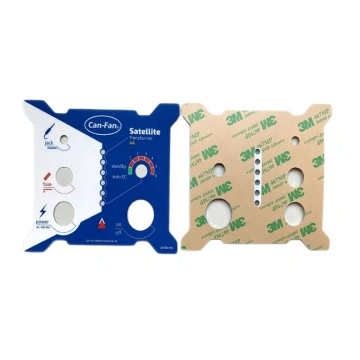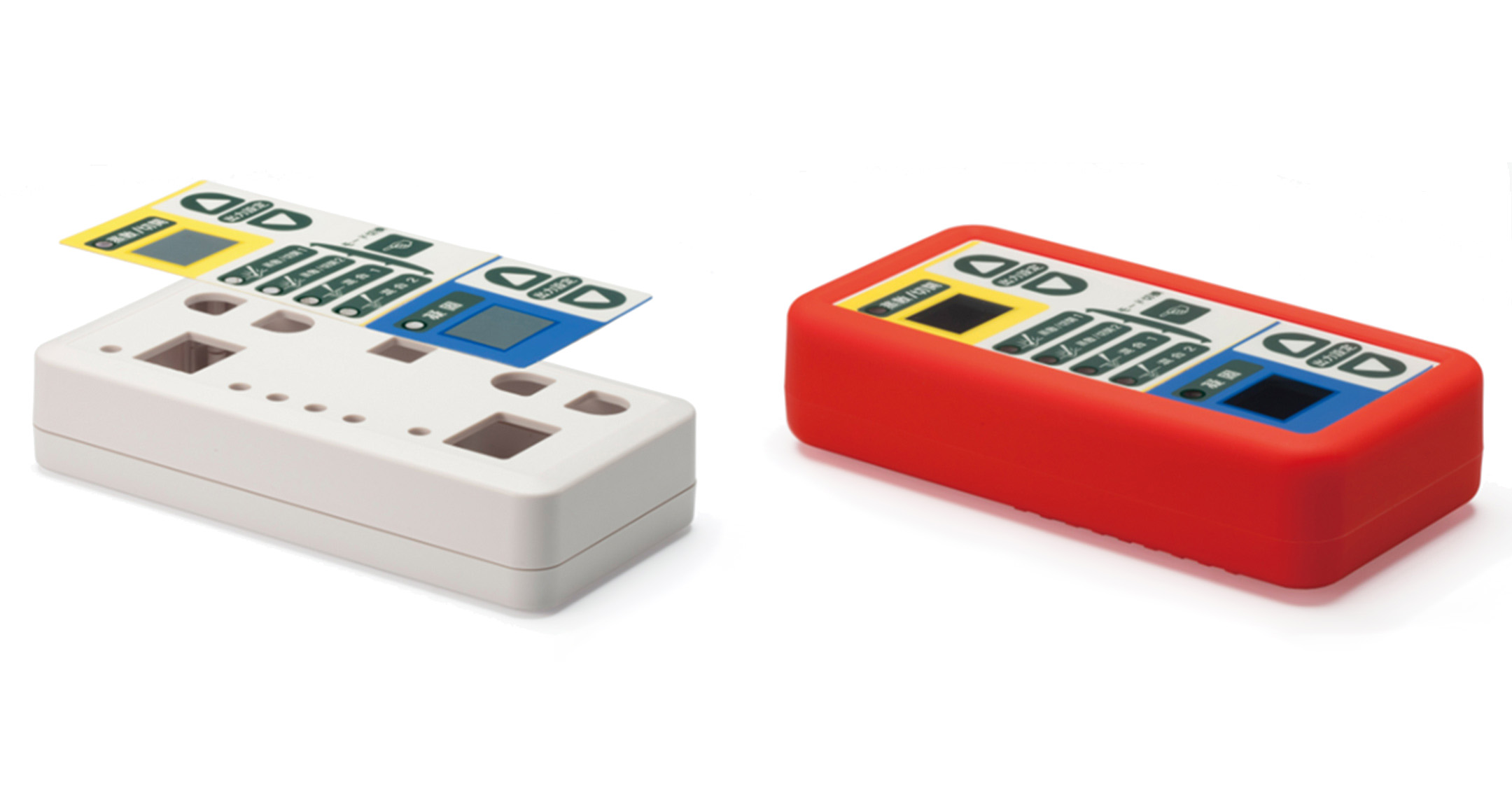A Comprehensive Guide to Selecting Graphic Overlays and Panels
Picking the proper graphic overlays and panels is a nuanced process that calls for careful consideration of different elements, consisting of product homes, printing strategies, and style components. The option between products such as polyester, polymer, and polycarbonate can substantially impact both longevity and performance, while the alignment of printing techniques with aesthetic demands is equally vital. Furthermore, recognizing functionality and adherence to sector standards can substantially enhance the total effectiveness of the item. Thus, a thorough expedition of these components is necessary to achieving ideal outcomes in graphic overlay choice. What details elements should one focus on when making these selections?
Recognizing Graphic Overlay Materials
Understanding the qualities of visuals overlay products is crucial for guaranteeing both performance and toughness in design applications. These materials act as protective layers that not only enhance the aesthetic appeal of a product yet additionally perform crucial duties in customer communication and device procedure.
The most common products utilized in graphic overlays consist of polyester, polycarbonate, and acrylic. Acrylic overlays give clearness and are often picked for their optical homes, though they may not use the same degree of impact resistance as polycarbonate.
In addition, the thickness of the overlay can influence both tactile responses and longevity. Thicker overlays give enhanced longevity however might decrease adaptability, while thinner options can supply more complex design opportunities. Understanding these attributes permits designers to choose the appropriate materials that straighten with the specific demands of their tasks, guaranteeing optimum performance and durability of the visuals overlays in numerous applications.
Key Printing Methods
Often, the choice of printing methods is a crucial variable in the production of graphic overlays and panels, as it straight influences both the aesthetic quality and toughness of the end product. The most typically used printing strategies consist of screen printing, digital printing, and pad printing, each offering unique benefits.
Display printing is preferred for its capacity to generate vibrant colors and is particularly efficient for huge runs. It gives excellent resilience against wear, making it optimal for overlays that will certainly experience regular usage. Digital printing, on the various other hand, enables high-resolution photos and detailed layouts, making it suitable for custom or low-volume projects. This technique also offers quick turn-around times and adaptability in shade adjustments.
Pad printing is particularly valuable for using graphics onto irregular surfaces, ensuring regular high quality across varied forms. This method is frequently chosen for its accuracy and capability to print great details.
Ultimately, the selection of printing method should straighten with the certain functional needs and aesthetic goals of the visuals overlay or panel, guaranteeing that the end product meets both aesthetic and performance criteria.
Style Factors To Consider
When choosing graphic overlays and panels, layout considerations play a crucial function in ensuring that the last product not just meets practical requirements yet likewise aligns with branding and customer experience objectives. The aesthetic elements, consisting of color design, typography, and imagery, need to reflect the brand name identity and resonate with the target market. Graphic Overlay and Panels. A cohesive style improves acknowledgment and supports brand name loyalty
Furthermore, the layout must focus on ease of navigating, ensuring that essential details is easily available. This consists of tactical positioning of switches, icons, and text to promote user interaction. The selection of materials additionally influences layout; as an example, a matte surface might reduce glare, while a glossy surface area can boost vibrancy.
Furthermore, the general measurements and form of the overlay should think about the designated application and tool compatibility - Graphic Overlay and Panels. Personalized shapes may supply an one-of-a-kind visual, yet they must not compromise performance
Functionality and Capability
Use and capability are critical aspects that identify the efficiency of graphic overlays and panels in real-world applications. The main goal of these components is to improve individual interaction while guaranteeing that necessary details is conveniently obtainable. A properly designed visuals overlay must assist in user-friendly navigation and promote efficient operation of the device or user interface view it it comes with.
When picking a graphic overlay, think about the format and the arrangement of controls. The style must focus on frequently utilized features, positioning them within easy reach. Furthermore, clear labeling with ideal icons or text is crucial for fast acknowledgment and understanding. Shade contrasts and tactile comments can additionally boost usability, helping individuals to differentiate in between various features and ensuring a smooth operational experience.
Performance likewise encompasses the overlay's toughness and resistance to ecological variables. A durable visuals overlay needs to hold up against damage, consisting of direct exposure to chemicals, dampness, and temperature level variants, without jeopardizing its clarity or tactile buildings. As a result, analyzing both functionality and performance during the selection process is important for guaranteeing that the graphic overlay or panel fulfills the details requirements of the application while supplying a positive user experience.
Compliance and Requirements
Choosing graphic overlays and panels calls for interest not only to use and performance but additionally to compliance with sector requirements and regulations. Making certain that your overlays satisfy these standards is critical for product market, efficiency, and safety approval.
Different sectors have specific standards that must be adhered to. Medical tools are subject to the FDA's guidelines, while vehicle applications need find more info to comply with ISO standards. Comprehending these needs early in the style procedure will certainly minimize the danger of expensive alterations or delays.
Material option is additionally important for conformity; particular chemicals and substances may be restricted or need certification. Overlays used in food-related applications need to fulfill FDA criteria for food contact materials, ensuring they do not seep unsafe substances. Furthermore, electromagnetic compatibility (EMC) requirements might use, specifically in electronic devices, necessitating cautious consideration of materials and style to protect against disturbance.
Incorporating compliance checks throughout the go now design and manufacturing process not only safeguards your product however likewise improves its reputation in the marketplace. Familiarity with relevant criteria is essential for any organization entailed in the production of graphic overlays and panels.

Conclusion
To conclude, picking graphic overlays and panels necessitates mindful factor to consider of material residential or commercial properties, publishing strategies, and layout components. The selection of products such as polyester, polycarbonate, or acrylic substantially effects longevity and capability. Aligning printing methods with visual goals guarantees aesthetic high quality, while prioritizing use improves user experience - Graphic Overlay and Panels. In addition, adherence to industry standards is important for product reliability. A comprehensive understanding of these elements helps with educated decision-making, eventually leading to effective design outcomes in graphic overlays and panels.

When picking visuals overlays and panels, style considerations play a pivotal role in making certain that the last product not only fulfills useful demands but also straightens with branding and individual experience goals.In conclusion, picking graphic overlays and panels necessitates mindful factor to consider of material residential or commercial properties, publishing methods, and design components. A detailed understanding of these elements facilitates educated decision-making, eventually leading to successful style outcomes in visuals overlays and panels.
Comments on “Graphic Overlay and Panels-- Tailored Solutions for Electronic Interfaces and Membranes”